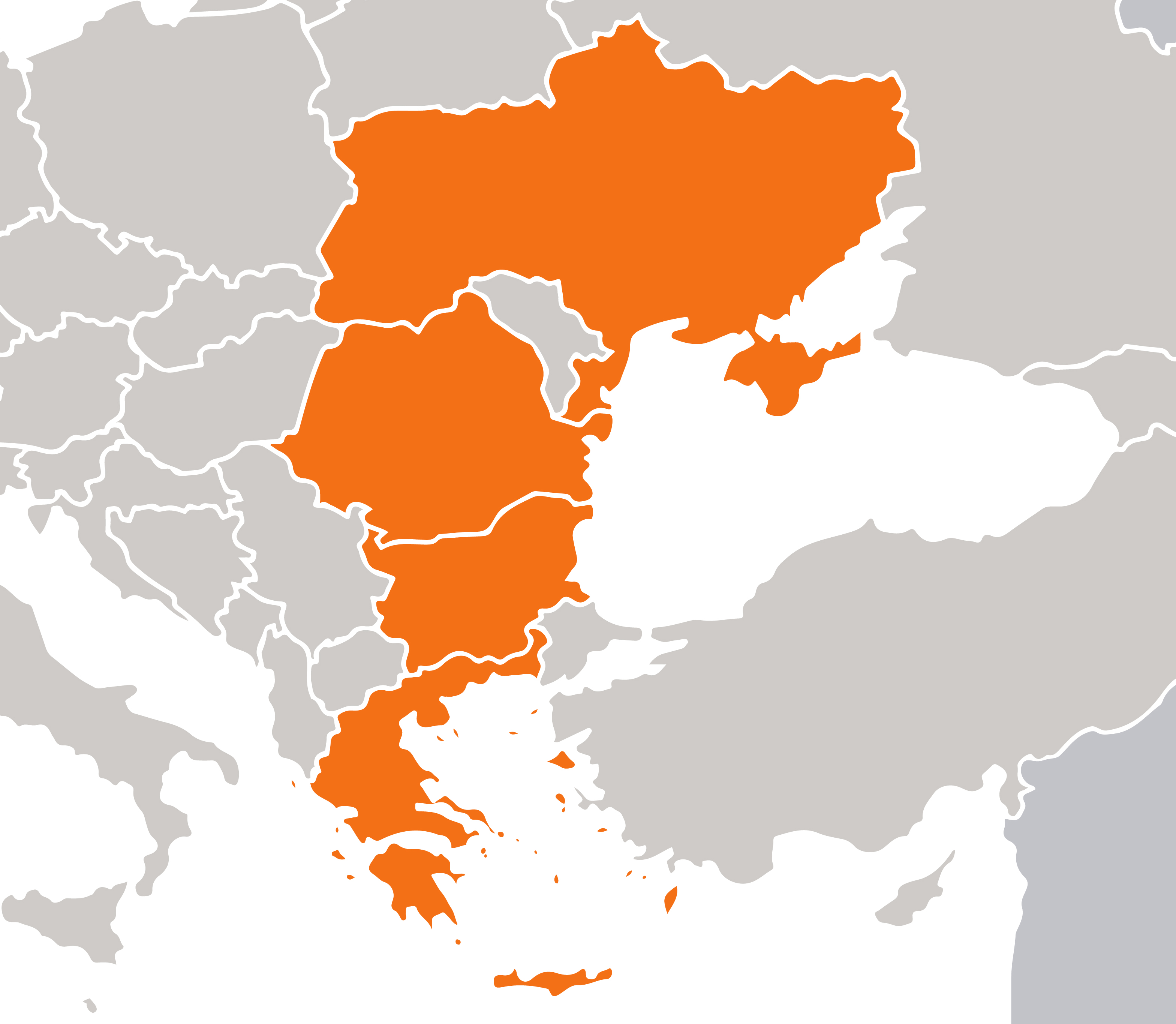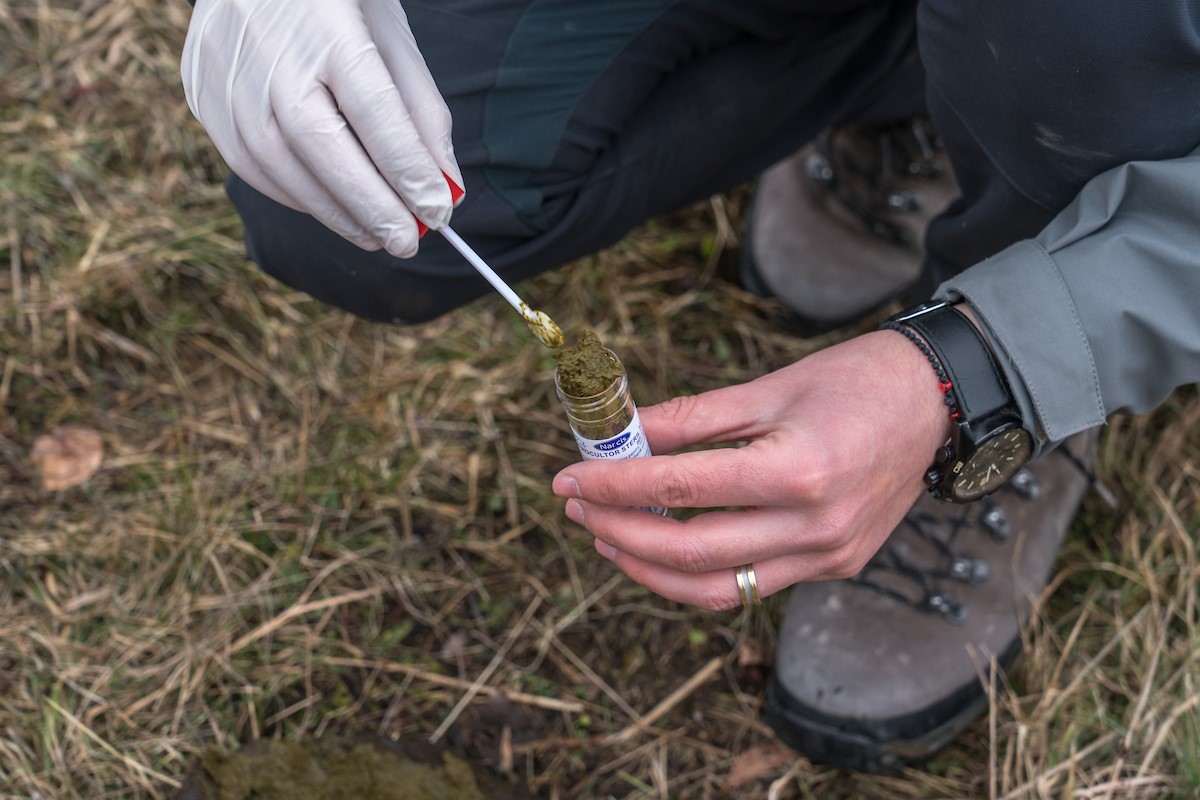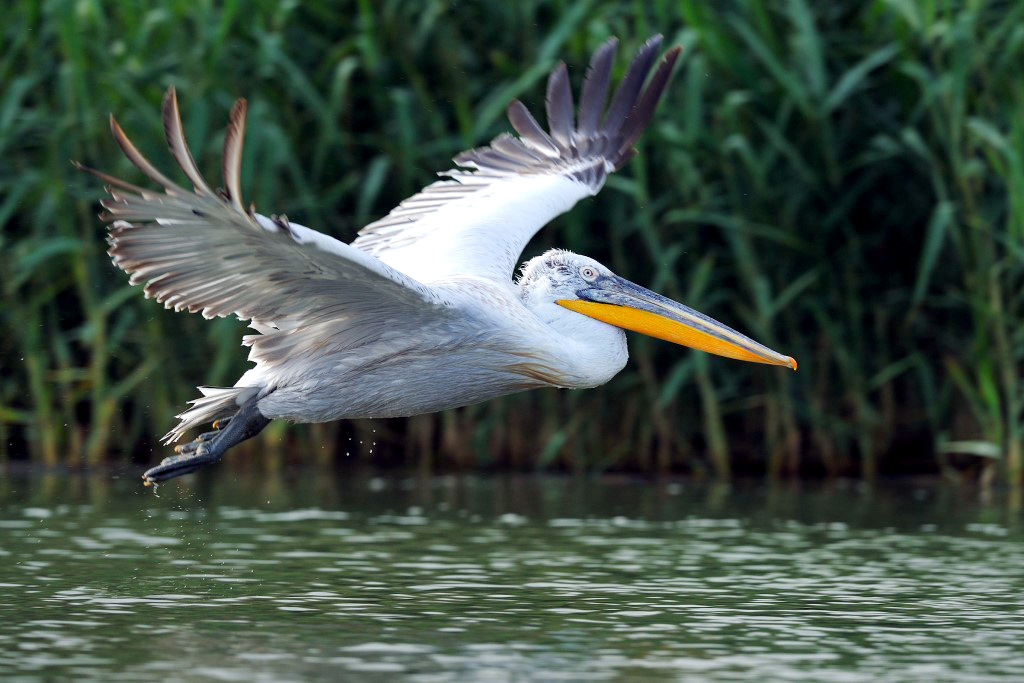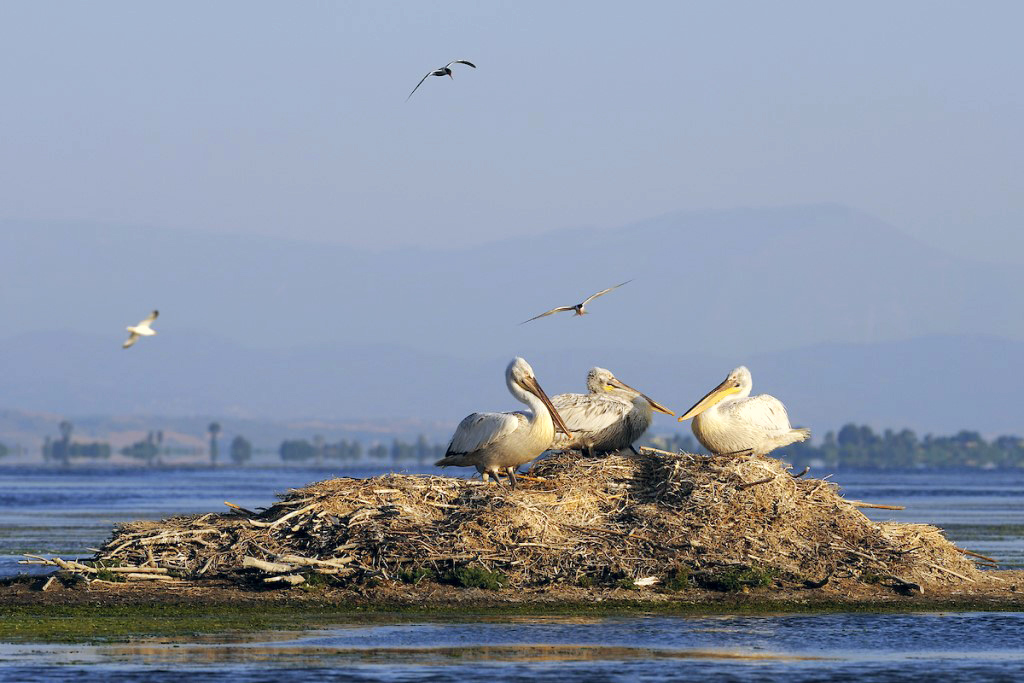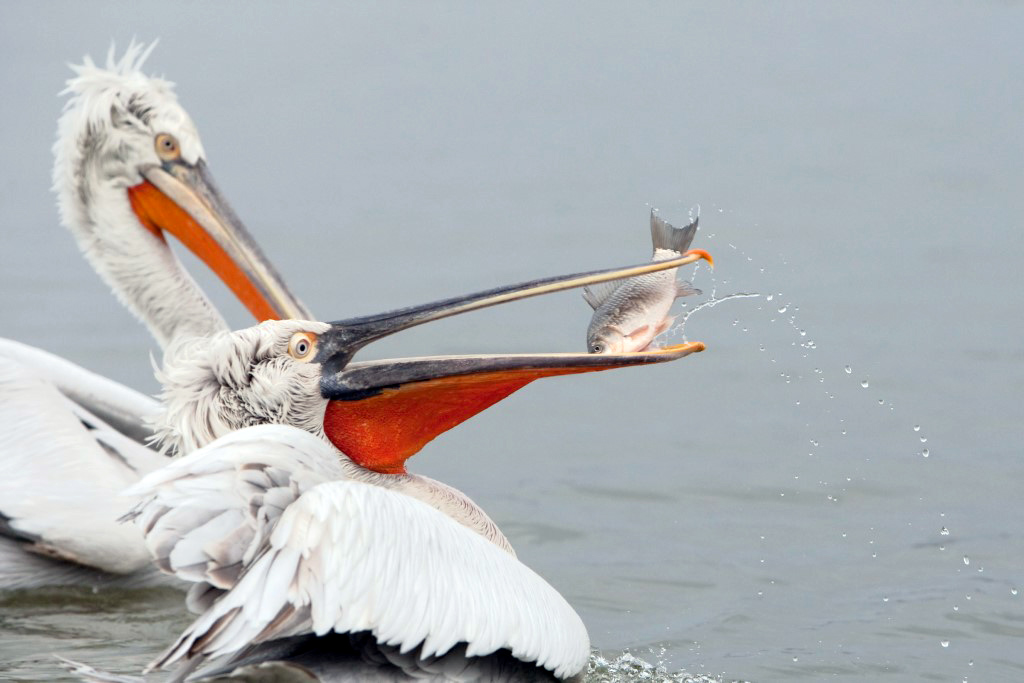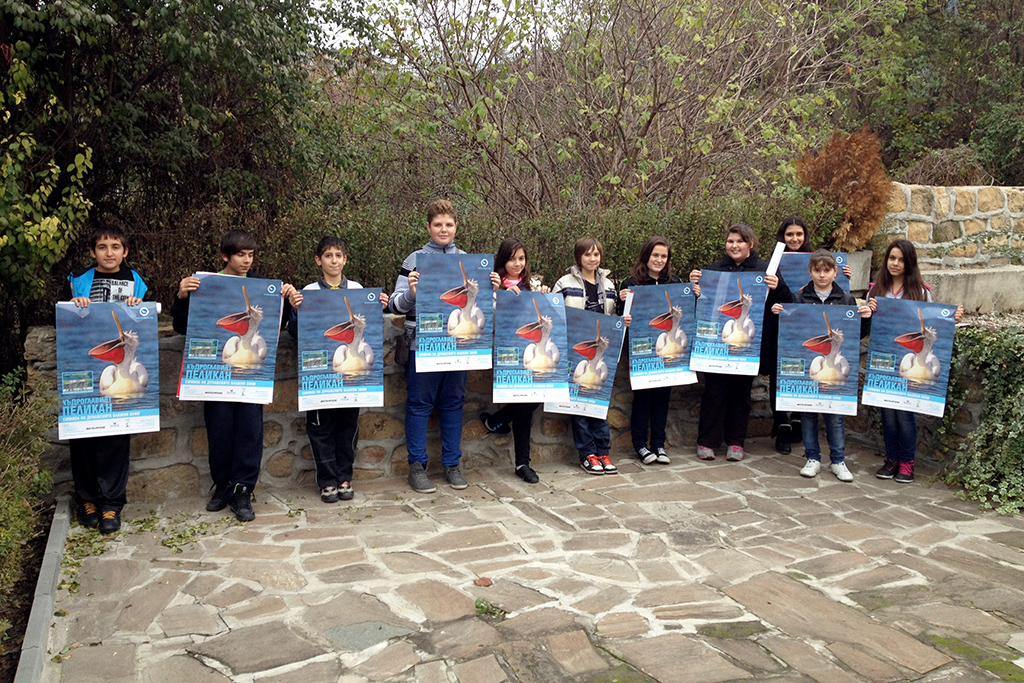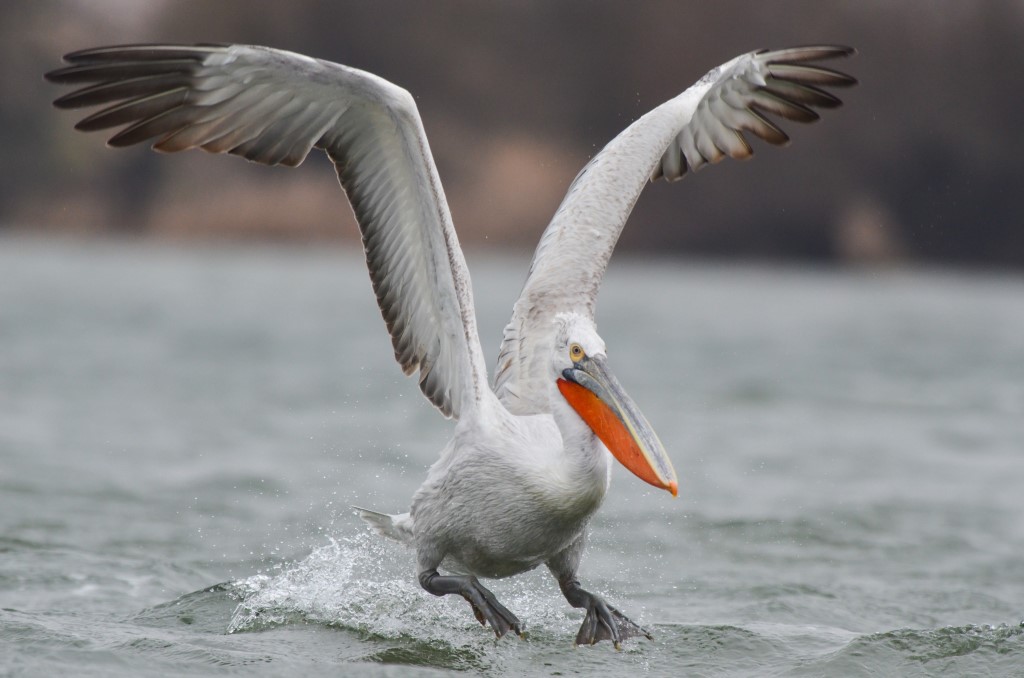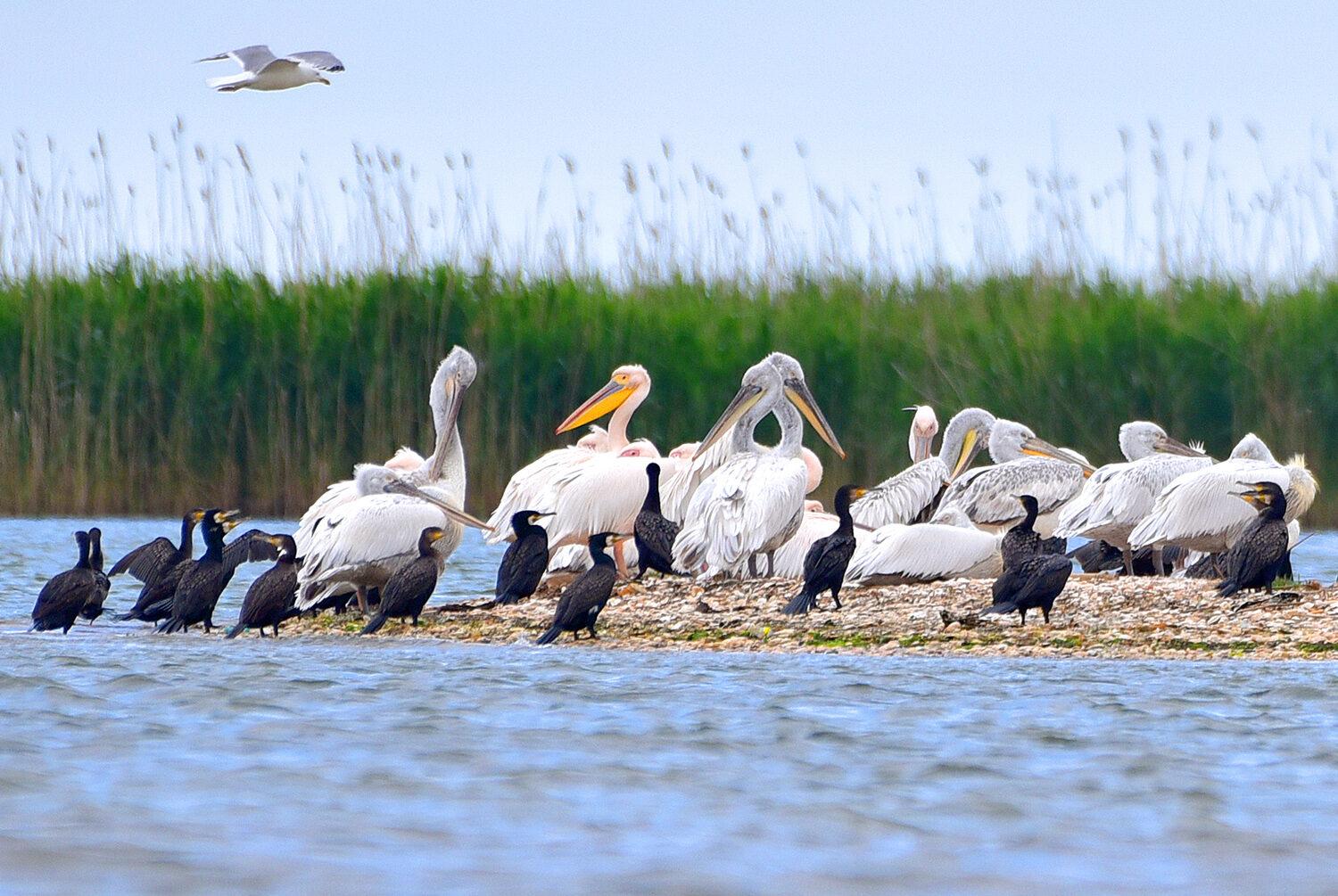Indicator species
The Dalmatian pelican acts as an ambassador for a rich and interconnected wetland system in Europe. As an iconic indicator species, supporting the comeback of the Dalmatian pelican can indirectly help to restore vast swathes of wetland, lake and marshy habitat that is likely to have a positive ripple effect on a multitude of other species. The Dalmatian pelican continues to show signs of recovery within their range in southeast Europe, including the Danube Delta rewilding area. Yet, their fragmented populations pose a problem for the species’ long-term stability.
Finding new ways to boost its numbers can reinvigorate an ecosystem, and shine a light on the need for more formal protection of these habitats, the benefits of large-scale wetland restoration, and the value of natural processes. As well as underlining the necessity of healthy fish populations, which leads to rivers being restored and rewilded. The Dalmatian pelican can do all of this, while taking on an ambassadorial role in promoting the need for well-connected, rewilded wetlands across Europe.
